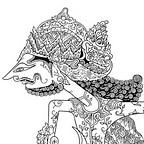Eastern States Buddhist Temple of America, Inc.
A Photo-Essay on Chinese Mahayana
Eastern States Buddhist Temple of America, Inc. (ESBT) is the oldest Chinese Buddhist association on the East Coast of the United States, founded in 1962. Per the norms of the vast majority of Chinese Buddhists, ESBT is Mahayana in orientation. Meaning Great Vehicle in Sanskrit, this tradition is highly diverse, influencing Buddhists in China, Vietnam, Korea, and Japan.
Over half of the global Buddhist population is Mahayana, with the greatest number of adherents in China. Unlike the more conservative Theravada, Mahayana holds that enlightenment can be reached within a single lifetime by members of both the monastic and lay communities, emphasizing the figure of the Bodhisattva, aspirant to Buddhahood. Furthermore, Mahayana practices tend to take on a local, syncretic character, blending with existing ethno-national traditions.
Eastern States Buddhist Temple
The original ESBT was founded in New York City in 1962 by James and Annie Ying, originally from Ningbo, China. First immigrating to Pasadena, California in 1947, they were unable to purchase a house in a decent neighborhood and promptly returned to China. Given the Chinese Civil War and Communist victory, the Yings departed once more, settling first in British Hong Kong and then Guomindang-controlled Taiwan. In 1955, they immigrated to the United States for the second time, settling in New York City.
Both of the Yings’ entries into the United States were a matter of good fortune. Before the Immigration and Nationality Act of 1965, the National Origins Formula severely restricted non-northwestern European immigration, with only 105 Chinese a year granted entry per the quota. With the Chinese community on the East Coast lacking associational cohesion, the Yings founded the ESBT to provide greater communal belonging.
In Spring 1962, the first devotional ceremony was held in the temporary quarters at 1544 Broadway. Soon after, the Temple moved to its permanent location at 64 Mott Street, where the original venue, still called ESBT, remains to this day as the smaller New York City branch. In the early years, the original Temple provided weekly services and Saturday night Buddhist lectures in Chinese with simultaneous English interpretation.
After the 1965 reform, the Chinese population on the East Coast naturally increased and with it the number of Chinese Buddhist temples, though most remained small. Wanting to create a large country estate for the growing Buddhist population, the Yings purchased 114 acres in South Cairo, Upstate New York in the late 1960s. Dedicated in 1971, that property now serves as the Retreat of the ESBT.
City Campus
Even with the impressive Retreat in South Cairo, the community still lacked a grand temple within New York City for larger religious events. In 1996, the Yings acquired the property at 133 Canal Street in Chinatown, formerly the Rosemary Theater that showed Chinese and adult films. Dedicated in 1997, this Temple serves as the City Campus of the ESBT and is the largest Buddhist temple in New York City.
The Temple’s exterior manifestly reveals its past as a cinema. The structure is flat and blockish, fully attached and woven into the surrounding commercial properties. Nonetheless, conventional Chinese architectural accents in the form of high-relief are appropriated effectively, making for a visually striking and familiarizing facade.
The interior of the property was fully renovated upon acquisition, though aspects of the floor plan, including a narrow reception leading to a grand hall, remain as a legacy of the old cinema. As is the case with the original ESBT on Mott Street, the reception area has a large censer as well as a nook-hall for Guanyin, the Chinese name for the Bodhisattva Avalokiteśvara. The interior color scheme is dominated by reds and yellows, which is conventional within Chinese aesthetics.
What was the principal screening room now serves as the Grand Buddha Hall. It features repetitive, meditative music with chanting, kneeling cushions for devotees, and a grand altar featuring a massive, 16-foot tall statue of Buddha seated on a lotus. It is the largest Buddha statue in New York City.
These photos were taken on a single day utilizing a standard zoom lens and a wide angle lens. Building layouts and a significant tourist presence required liberal cropping in editing. A full reverse view of the Grand Buddha Hall in the City Campus was not featured because photography of its memorial wall is not permitted per Buddhist belief.
